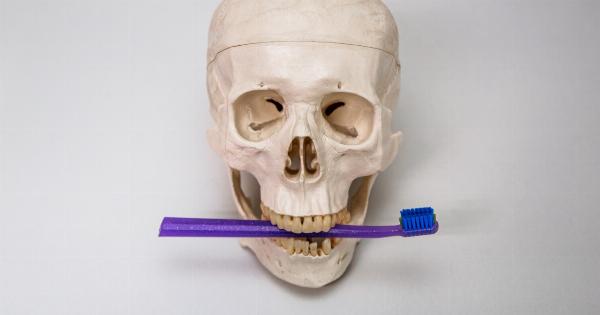As we age, our bodies go through various changes both internally and externally. One of the most significant factors contributing to the aging process is the gradual deterioration of our DNA. Dr.
Papacharalambous, a renowned expert in the field of anti-aging, sheds light on the intricate connection between DNA and the process of aging.
The Role of DNA in Aging
DNA, or deoxyribonucleic acid, is a complex molecule that contains all the genetic information necessary for an organism to develop, function, and reproduce.
It serves as a blueprint for cellular activities, instructing cells on how to carry out their specific functions.
Over time, however, the DNA within our cells accumulates damage and mutations. This can be attributed to various factors, including exposure to environmental toxins, oxidative stress, and the natural wear and tear that occurs with age.
These changes in DNA can lead to a decline in cellular function and contribute to the visible signs of aging.
Telomeres and Aging
Telomeres, which are repetitive sequences of DNA located at the ends of chromosomes, play a crucial role in the aging process. They act as protective caps, preventing the loss of genetic material during cell division.
However, with each cell replication, telomeres shorten gradually.
Once telomeres become critically short, they can no longer effectively protect the chromosomes from damage. This leads to cellular senescence, a state in which cells lose their ability to divide and function optimally.
The accumulation of senescent cells is associated with various age-related diseases and the overall decline in health and vitality.
The Impact of DNA Damage on Cellular Function
As DNA accumulates damage and mutations, it can hinder the proper functioning of cells. DNA damage can interfere with essential processes such as DNA replication, transcription, and repair.
This leads to a decline in cell integrity and an increased risk of diseases.
Furthermore, damaged DNA can trigger the activation of genes involved in inflammation and stress responses.
Chronic inflammation and increased oxidative stress contribute to the aging process and are associated with numerous age-related conditions, including cardiovascular disease, diabetes, and neurodegenerative disorders.
Repairing DNA Damage
Fortunately, our cells have sophisticated mechanisms to repair DNA damage and maintain genomic stability. DNA repair enzymes continuously monitor the integrity of our DNA and work to correct any errors or damage.
These repair processes are essential for preventing the accumulation of mutations and maintaining cell function.
However, as we age, the efficiency of these repair mechanisms declines. This leads to a gradual decline in the overall repair capacity of our cells and an increased susceptibility to DNA damage.
Enhancing these repair mechanisms through various interventions, such as lifestyle modifications and targeted therapies, may hold promise in combating the aging process.
The Role of Epigenetics in Aging
While DNA mutations and damage play an essential role in aging, emerging research suggests that epigenetic modifications also contribute significantly to the process.
Epigenetics refers to changes in gene expression patterns that do not involve alterations to the underlying DNA sequence.
Epigenetic modifications, such as DNA methylation and histone modifications, can be influenced by various factors, including diet, lifestyle, and environmental exposures.
These modifications can impact gene expression levels, ultimately affecting cellular function and contributing to the aging process.
Anti-Aging Interventions
Given the connection between DNA and the aging process, researchers and experts are working diligently to develop interventions that can slow down or even reverse the signs of aging.
One area of research focuses on telomeres and telomerase, an enzyme responsible for maintaining telomere length. Telomerase activation has been shown to delay cellular senescence and extend cellular lifespan in various studies.
However, the potential use of telomerase-related therapies in anti-aging strategies is still in its early stages.
Another promising avenue of research involves targeting DNA repair mechanisms. By enhancing the efficiency of DNA repair enzymes, scientists hope to mitigate the accumulation of DNA damage and prevent age-related diseases.
Various compounds, such as polyphenols and NAD+ precursors, have shown promising results in preclinical studies and are currently being investigated further.
Furthermore, lifestyle factors, such as exercise, diet, and stress management, can significantly impact DNA integrity and the aging process.
Regular physical activity, a diet rich in antioxidants and nutrients, and effective stress reduction techniques may contribute to better DNA repair and overall cellular health.
The Future of Anti-Aging
Understanding the intricate connection between DNA and the aging process is a complex and ongoing endeavor. While much progress has been made in unraveling the underlying mechanisms, there are still many unanswered questions.
However, with advancements in technology and increasing knowledge in the field of genetics, the future of anti-aging looks promising.
It is likely that a multi-faceted and personalized approach, targeting both DNA damage and epigenetic modifications, will be the key to successful anti-aging interventions.
Dr. Papacharalambous, a leading expert in the field, emphasizes the importance of further research and collaborations to unlock the full potential of anti-aging strategies.
By understanding the connection between DNA and the aging process, we can strive to enhance not only the quantity but also the quality of our lives as we age.






























